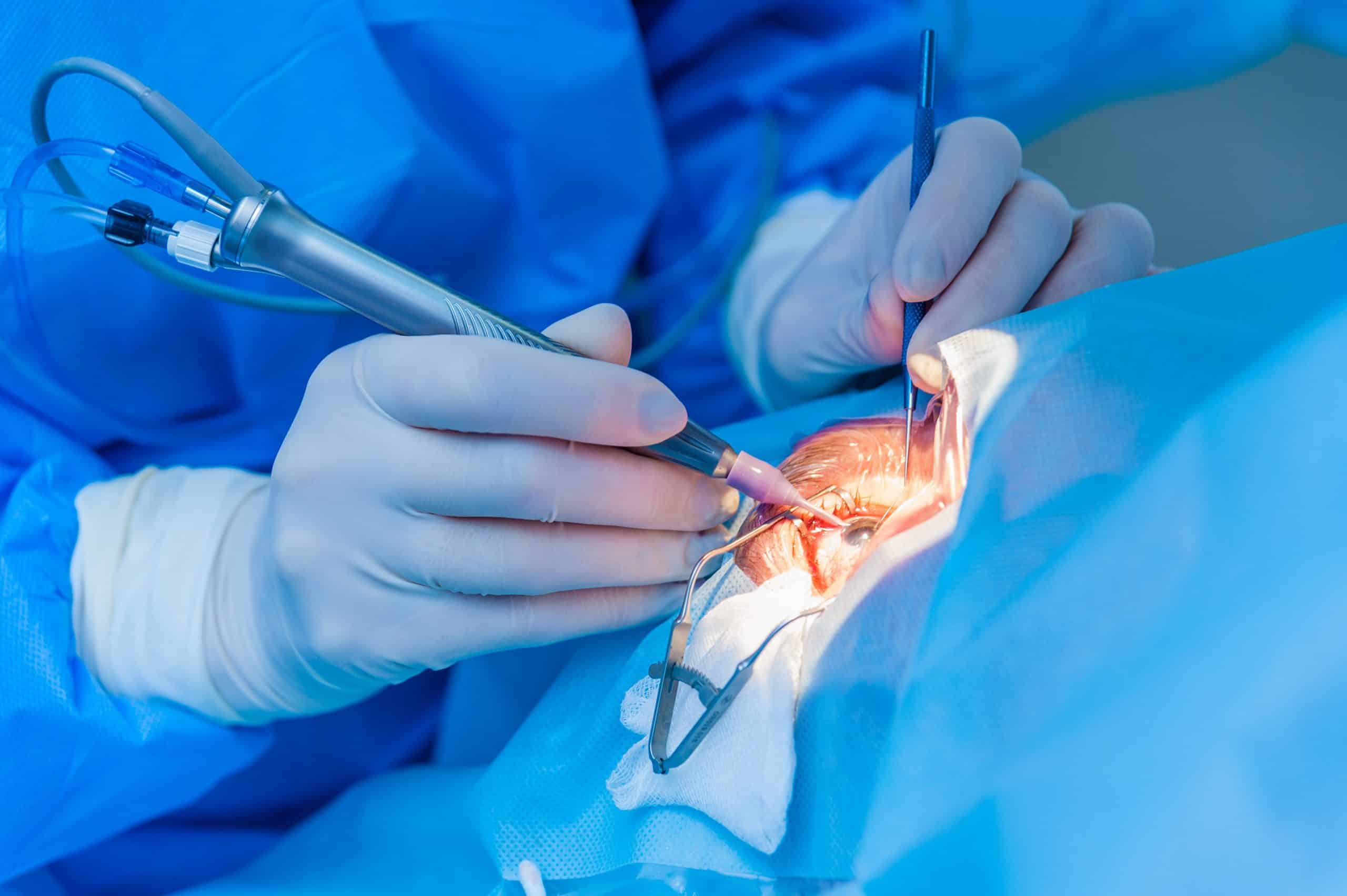How Much Does Cataracts Surgery Cost in Australia?

Cataract surgery is a common procedure aimed at restoring vision lost due to cataracts, a condition where the lens of the eye becomes cloudy. While many Australians seek this procedure, a key concern remains the cost involved. This article provides an in-depth look at the costs associated with cataracts surgery in Australia, along with various influencing factors and insurance options.
Understanding Cataracts and Its Impact on Vision
Cataracts occur when the proteins in the lens of the eye clump together, leading to the formation of cloudy areas. This clouding can significantly impair vision, affecting an individual’s quality of life. As the condition progresses, it can lead to difficulties in daily activities, such as reading, driving, and recognizing faces. The gradual loss of clarity can be frustrating, as many individuals may not realize the extent of their vision loss until it becomes severe. This gradual progression often leads to a sense of isolation, as hobbies and social interactions become increasingly challenging.
The costs of cataracts surgery can vary widely based on several factors, including the type of surgery, geographical location, and healthcare provider. Understanding these costs can assist patients in making informed decisions regarding their treatment options.
What are Cataracts?
Cataracts can develop due to a variety of factors, including aging, genetics, and prolonged exposure to sunlight. Essentially, the lens of the eye, which should be clear, becomes opaque, leading to blurred vision. This condition is not inherently painful but can progressively worsen, necessitating medical intervention. In fact, cataracts are one of the leading causes of blindness worldwide, particularly in older adults. Understanding the risk factors associated with cataracts is crucial for prevention; for instance, maintaining a healthy diet rich in antioxidants and wearing UV-protective sunglasses can help mitigate some of the risk associated with environmental factors.

Symptoms and Diagnosis of Cataracts
Common symptoms of cataracts include blurred or cloudy vision, increased difficulty with night vision, and experiencing halos around lights. Patients may also find their colors appearing faded. An eye specialist can diagnose cataracts through a comprehensive eye examination, checking for changes in the lens and overall eye health. In addition to these symptoms, individuals may notice that their prescription glasses or contact lenses require frequent adjustments, as their vision continues to change. Early detection is key; therefore, regular eye exams are essential, especially for those over the age of 60 or with a family history of cataracts. These exams not only help in identifying cataracts but also in monitoring the overall health of the eyes, allowing for timely interventions and treatment options to be discussed with the patient.
Read about laser eye surgery on: The Pros and Cons of Laser Eye Surgery
The Necessity of Cataracts Surgery
While cataracts are common, they do not always require surgery immediately. The decision to undergo surgery is dependent on the level of visual impairment and its impact on daily life. If cataracts are interfering with a person’s ability to function or perform routine tasks, surgery may be deemed necessary. In many cases, patients may find themselves adjusting their lifestyle to cope with the gradual vision loss, such as using brighter lighting or magnifying glasses. However, these adaptations can only go so far, and when they no longer suffice, it becomes crucial to consider surgical options.

When is Cataracts Surgery Needed?
Cataract surgery is recommended when vision loss begins to hinder daily activities such as reading, cooking, or driving. It is typically not performed until the cataracts significantly affect the patient’s quality of life. Regular eye examinations can help determine the right time for surgery. During these check-ups, eye care professionals assess not only the clarity of vision but also the overall health of the eye. Patients are encouraged to communicate any changes in their vision, as this can aid in making timely decisions regarding surgery. Read more about communicate on https://www.communicate-ed.org.uk/
Risks and Benefits of Cataracts Surgery
Like any surgical procedure, cataract surgery comes with its own set of risks, including infection, bleeding, and potential complications such as retinal detachment. However, the benefits often outweigh the risks. Most patients experience improved vision post-surgery, which can lead to a higher quality of life. In fact, many individuals report being able to return to activities they once enjoyed, such as reading without glasses or driving at night with confidence. Furthermore, advancements in surgical techniques and technology have significantly reduced the risks associated with the procedure, making it one of the most commonly performed surgeries worldwide.
Additionally, the recovery process for cataract surgery is generally quick, with many patients experiencing noticeable improvements in their vision within a few days. Post-operative care is essential, and patients are usually provided with specific instructions to ensure optimal healing. This may include using prescribed eye drops, attending follow-up appointments, and avoiding strenuous activities for a short period. With proper care, the likelihood of complications decreases, allowing patients to enjoy the benefits of clearer vision and a more active lifestyle sooner than they might expect.
Breakdown of Cataracts Surgery Costs in Australia
Pre-Surgery Costs
Pre-surgery costs may include initial consultations, diagnostic tests, and any necessary imaging assessments. The cost of these consultations can vary, but patients should anticipate spending anywhere from AUD 100 to AUD 250 on initial visits, depending on the specialist’s fee structure. Additionally, patients may need to undergo tests such as visual acuity assessments and corneal topography, which can further contribute to the overall pre-surgery expenses. These assessments are essential for determining the severity of the cataract and the most suitable surgical approach, ensuring that patients receive personalized care tailored to their specific needs.
Surgery Procedure Costs
The actual procedure for cataract surgery can range between AUD 2,500 to AUD 7,000 per eye. The variation in cost typically corresponds to the type of lens used during the surgery and the experience level of the surgeon. For instance, premium intraocular lenses may result in higher fees compared to standard lenses. Moreover, the choice between traditional phacoemulsification and laser-assisted cataract surgery can also influence the total cost. Laser-assisted surgery, while often providing enhanced precision and potentially quicker recovery times, generally comes with a higher price tag, making it an important consideration for patients weighing their options.
Post-Surgery Costs
After the surgery, follow-up appointments and medications also incur costs. Patients may require eye drops for several weeks to prevent infection and inflammation, which can add an additional AUD 100 to AUD 300 to total expenses. Follow-up consultations are crucial to ensure the success of the procedure and are typically billed separately. In some cases, patients might also need additional treatments or corrective procedures if their vision does not stabilize as expected. Furthermore, patients should consider the potential costs associated with any lifestyle adjustments or aids they may need post-surgery, such as new prescription glasses or vision therapy, to fully optimize their visual outcomes after the procedure. Click here to find more about prescription.
Factors Influencing the Cost of Cataracts Surgery
Several key factors determine the overall cost of cataracts surgery in Australia. Understanding these can help patients prepare financially for the procedure.
Surgeon’s Experience and Reputation
The expertise of the surgeon performing the procedure can significantly impact the overall cost. Highly experienced surgeons who are well-reputed in the field may charge more for their services. However, their skill can also lead to better surgical outcomes, minimizing risks and potential complications. Patients often find that investing in a seasoned surgeon can lead to a smoother surgical experience and a quicker recovery, which can ultimately save money in the long run by reducing the need for follow-up treatments or additional surgeries.
Geographical Location
The location of the medical facility plays an important role in determining costs. Major cities like Sydney and Melbourne may have higher fees compared to regional areas. Additionally, overhead costs associated with urban healthcare facilities can contribute to the pricing structure of cataract surgery. Patients in rural areas might find more affordable options, but they should also consider travel expenses and the availability of specialized care, which can vary significantly between locations.
Type of Cataracts Surgery
There are different surgical techniques available for cataract removal, including traditional phacoemulsification and laser-assisted cataract surgery. Laser surgery may come with a higher price tag but can offer benefits in terms of precision and recovery time. Patients should discuss their options with their surgeon to determine the most suitable approach based on their needs. Furthermore, the choice of intraocular lens (IOL) can also influence the total cost. Premium lenses, which provide advanced features such as multifocality or astigmatism correction, may incur additional charges but can enhance visual outcomes and reduce dependence on glasses post-surgery.
Insurance Coverage
Insurance coverage is another critical factor that can affect the out-of-pocket cost for cataract surgery. Many health insurance plans in Australia cover a portion of the surgical fees, but the extent of coverage can vary widely. Patients should carefully review their policy details and consult with their insurance provider to understand what is included. Some may also find it beneficial to explore payment plans or financing options offered by healthcare facilities, which can help manage the financial burden of surgery.
Preoperative Assessments and Follow-Up Care
Preoperative assessments, including eye examinations and diagnostic tests, are essential for determining the appropriate surgical approach and ensuring optimal outcomes. These assessments can add to the overall cost of the procedure. Additionally, follow-up care, which may involve multiple visits to monitor healing and visual acuity, should be factored into the total expenses. Patients should inquire about the number of follow-up appointments required and whether these are included in the initial surgical fee, as this can impact their financial planning for the surgery.
Insurance and Medicare Coverage for Cataracts Surgery
Understanding how health insurance and Medicare work concerning cataracts surgery can help patients navigate their financial responsibilities. Coverage can significantly reduce out-of-pocket costs, making the procedure more accessible.
Understanding Medicare Benefits
Medicare in Australia typically covers the cost of cataract surgery when performed in a public hospital. However, patients may be subject to waiting lists and may need to adhere to certain guidelines to qualify for benefits. It’s crucial to consult with the healthcare provider to understand the extent of coverage available.
Private Health Insurance Coverage
Private health insurance can also play a role in covering the costs of cataracts surgery. Many policies cover a portion of the surgery costs, depending on the individual plan. It’s advisable for patients to review their policies and discuss details with their insurance provider to fully understand the level of coverage available.
In conclusion, the cost of cataracts surgery in Australia can vary greatly based on multiple factors. With proper understanding and planning, patients can better manage their financial responsibilities while prioritizing their eye health and, ultimately, their quality of life.